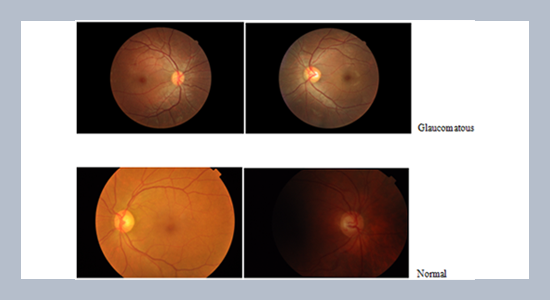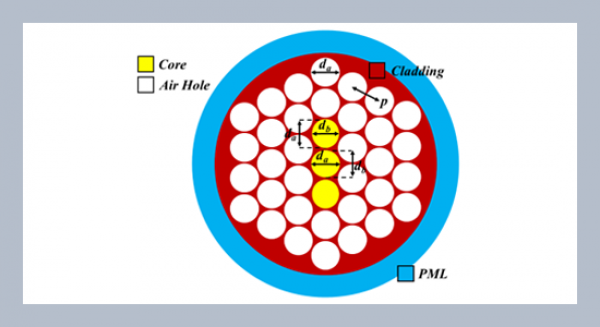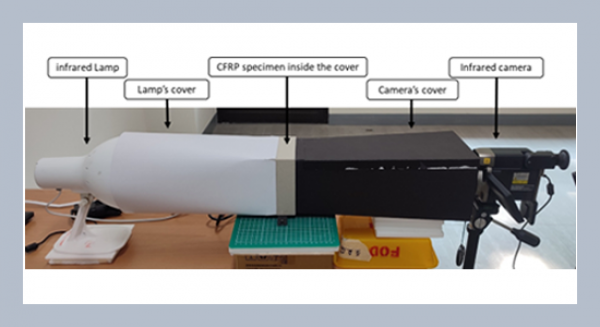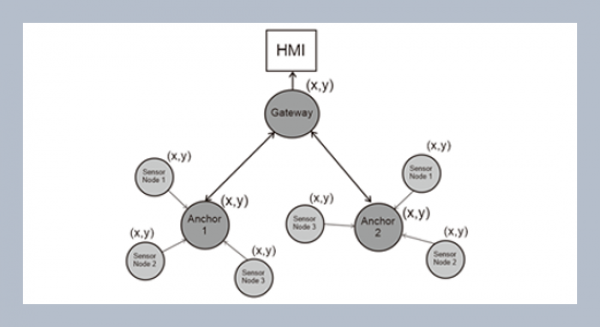REFERENCES
- Ahn, J.M., Kim, S., Ahn, K.S., Cho, S.H., Lee, K.B., Kim, U.S. 2018. A deep learning model for the detection of both advanced and early glaucoma using fundus photography. PloS one, 13, e0207982.
- Bourne, R., Steinmetz, J.D., Flaxman, S., Briant, P.S., Taylor, H.R., Resnikoff, S., ... & Tareque, M.I. 2021. Trends in prevalence of blindness and distance and near vision impairment over 30 years: An analysis for the Global Burden of disease study. The Lancet global health, 9, e130–e143.
- Diaz-Pinto, A., Morales, S., Naranjo, V., Köhler, T., Mossi, J.M., Navea, A. 2019. CNNs for automatic glaucoma assessment using fundus images: An extensive validation. Biomedical engineering online, 18, 1–19.
- Gómez-Valverde, J.J., Antón, A., Fatti, G., Liefers, B., Herranz, A., Santos, A., Sánchez, C.I., Ledesma-Carbayo, M.J. 2019. Automatic glaucoma classification using color fundus images based on convolutional neural networks and transfer learning. Biomedical Optics Express, 10, 892–913.
- Haleem, M.S., Han, L., Van Hemert, J., Li, B. 2013. Automatic extraction of retinal features from colour retinal images for glaucoma diagnosis: a review. Computerized Medical Imaging and Graphics, 37, 581–596.
- Halpern, D.L., Grosskreutz, C.L. 2002. Glaucomatous optic neuropathy: mechanisms of disease. Ophthalmology Clinics of North America, 15, 61–68.
- Huang, G., Liu, Z., Van Der Maaten, L., Weinberger, K.Q. 2017. Densely connected convolutional networks. Proceedings of the IEEE conference on computer vision and pattern recognition, 4700–4708.
- Issac, A., Parthasarthi, M., Dutta, M.K. 2015. An adaptive threshold based algorithm for optic disc and cup segmentation in fundus images. In 2015 2nd international conference on signal processing and integrated networks (SPIN), 143–147, IEEE.
- Kanse, S.S., Yadav, D.M. 2019. Retinal fundus image for glaucoma detection: A review and study. Journal of Intelligent Systems, 28, 43–56.
- Kolář, R., Jan, J. 2008. Detection of glaucomatous eye via color fundus images using fractal dimensions. Radioengineering, 17, 109–114.
- Krishnan, M.M.R., Faust, O. 2013. Automated glaucoma detection using hybrid feature extraction in retinal fundus images. Journal of Mechanics in Medicine and Biology, 13, 1350011.
- Li, X., Shen, L., Shen, M., Qiu, C.S. 2019. Integrating handcrafted and deep features for optical coherence tomography based retinal disease classification. IEEE Access, 7, 33771–33777.
- Li, Z., He, Y., Keel, S., Meng, W., Chang, R.T., He, M. 2018. Efficacy of a deep learning system for detecting glaucomatous optic neuropathy based on color fundus photographs. Ophthalmology, 125, 1199–1206.
- Maheshwari, S., Pachori, R.B., Acharya, U.R. 2016. Automated diagnosis of glaucoma using empirical wavelet transform and correntropy features extracted from fundus images. IEEE Journal of Biomedical and Health Informatics, 21, 803–813.
- Mishra, M., Nath, M.K., Dandapat, S. 2011. Glaucoma detection from color fundus images. International Journal of Computer & Communication Technology (IJCCT), 2, 7–10.
- Mvoulana, A., Kachouri, R., Akil, M. 2019. Fully automated method for glaucoma screening using robust optic nerve head detection and unsupervised segmentation based cup-to-disc ratio computation in retinal fundus images. Computerized Medical Imaging and Graphics, 77, 101643.
- Nath, M.K., Dandapat, S. 2012. Techniques of glaucoma detection from color fundus images: A review. International Journal of Image, Graphics and Signal Processing, 4, 44.
- Nayak, J., Acharya U, R., Bhat, P.S., Shetty, N., Lim, T.C. 2009. Automated diagnosis of glaucoma using digital fundus images. Journal of Medical Systems, 33, 337–346.
- Perdomo, O., Andrearczyk, V., Meriaudeau, F., Müller, H., González, F.A., 2018. Glaucoma diagnosis from eye fundus images based on deep morphometric feature estimation. In Computational pathology and ophthalmic medical image analysis, 319–327, Springer.
- Phan, S., Satoh, S.I., Yoda, Y., Kashiwagi, K., Oshika, T. 2019. Evaluation of deep convolutional neural networks for glaucoma detection. Japanese Journal of Ophthalmology, 63, 276–283.
- Resnikoff, S., Lansingh, V.C., Washburn, L., Felch, W., Gauthier, T.M., Taylor, H.R., Eckert, K., Parke, D., Wiedemann, P. 2020. Estimated number of ophthalmologists worldwide (International Council of Ophthalmology update): Will we meet the needs? British Journal of Ophthalmology, 104, 588–592.
- Simonyan, K., Zisserman, A. 2014. Very deep convolutional networks for large-scale image recognition. arXiv preprint arXiv:1409.1556.
- Sivaswamy, J., Krishnadas, S.R., Joshi, G.D., Jain, M., Tabish, A.U.S. 2014. Drishti-gs: Retinal image dataset for optic nerve head (onh) segmentation. In 2014 IEEE 11th International Symposium on Biomedical Imaging (ISBI), 53–56, IEEE.
- Sivaswamy, J., Krishnadas, S., Chakravarty, A., Joshi, G., Tabish, A.S. 2015. A comprehensive retinal image dataset for the assessment of glaucoma from the optic nerve head analysis. JSM Biomedical Imaging Data Papers, 2, 1004.
- Soorya, M., Issac, A., Dutta, M.K. 2018. An automated and robust image processing algorithm for glaucoma diagnosis from fundus images using novel blood vessel tracking and bend point detection. International Journal of Medical Informatics, 110, 52–70.
- Ting, D.S., Peng, L., Varadarajan, A.V., Keane, P.A., Burlina, P.M., Chiang, M.F., Schmetterer, L., Pasquale, L.R., Bressler, N.M., Webster, D.R., Abramoff, M. 2019. Deep learning in ophthalmology: The technical and clinical considerations. Progress in Retinal and Eye Research, 72, 100759.















